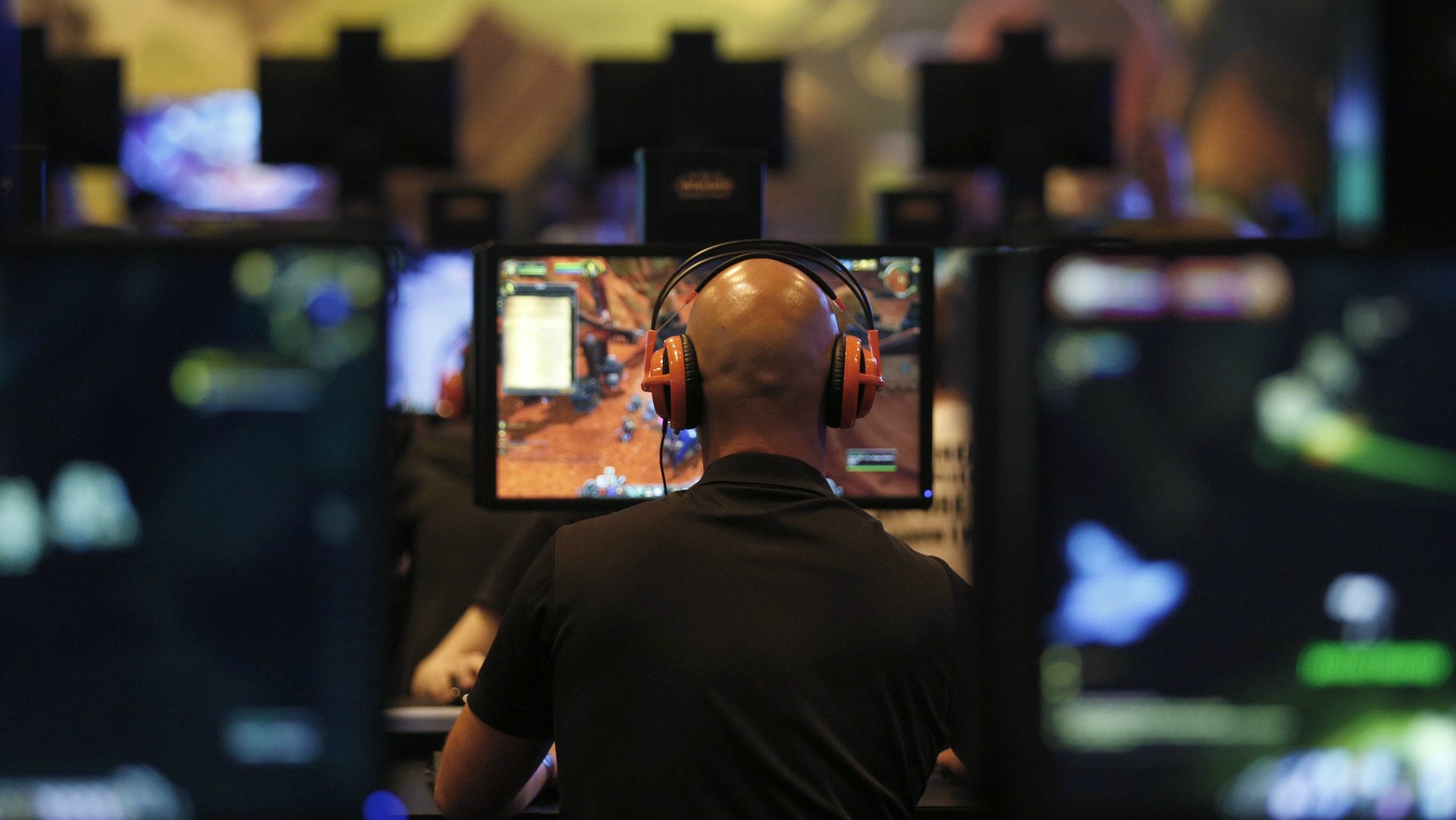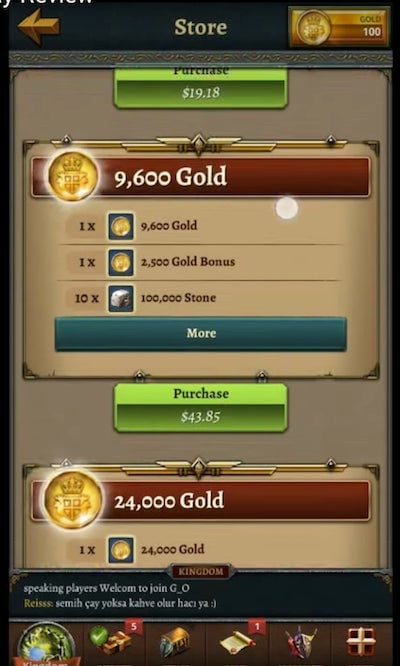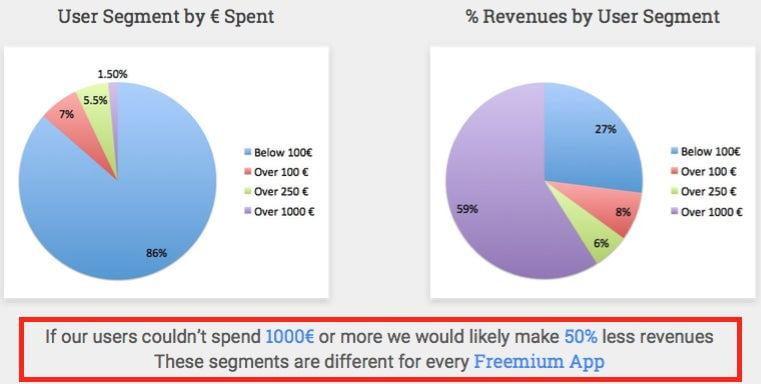What digital media could learn from online gaming (Hint: in-app purchases, for starters)
News publishers have a lot to learn from the gaming industry. Especially when it comes to testing and promoting apps.


News publishers have a lot to learn from the gaming industry. Especially when it comes to testing and promoting apps.
In the gaming industry, average revenue per user is a news publisher’s dream. Last week, I spoke with Alexis Bonte, CEO of successful game publisher eRepublik Labs. The company stretches between Dublin, Bucarest, and Madrid where Bonte lives. One of its best selling products, Age of Lords, has made €129 ($144) in cumulative revenue per player after its first 335 days of existence. For two million players, that would be €258 million ($288 million) in revenue. But as good as it is, Age of Lords’ ARPU is low compared to Summoners War ($280) or Game of War ($500).
To put things in perspective, the ARPU for a publication such as The New York Times is $176 per digital subscriber per year (based on 2015 figures: 1.094 million subscribers generating a revenue of $193 million). But for a publication charging $9 per month, taking in account a 15% discount (promotion, trial offers), the ARPU evolves around $90 per year. Such a media company would need more than three million subscribers to make as much as Age of Lords…

As with every freemium model, eRepublik’s game revenue comes from multiple, well-crafted in-app purchases where players acquire currency or fighting capabilities, on a regularly repeated basis. Because $144 is merely an average, we’ll learn more by giving a closer look at user segmentation.
First, a game’s revenue structure follows the Pareto Principle, meaning a tiny number of players account for most of the revenue:
- While the average player spends $144, 86% spend less that $110.
- The vast majority of these 86% account for only 27% of the game’s revenue.
- In fact, the bulk of the revenue comes from the tiny fraction (1.5%) of users spending more than €1,000 ($1,100) in the game: they contribute 59% of the revenue generated by Age of Lords. Details here:

To that extent, the gaming industry looks like the movie business. Roughly speaking, explains Alexis Bonte, out of five games put on the market, one will be a hit, two will pay for development and promotion costs, and two will fail. “The luck factor plays a big role: we operate in a highly competitive market,” he continues, stating that one game publisher out of 50 actually makes money. “The simultaneous release of a comparable game could make our life more complicated…”
As a result, two elements become critical: Testing everything at every stage, and defining strong KPIs.
“We test at every single stage of the development of a game,” explains the CEO of eRepublik Labs. “Actually, even before writing the first line of code, we begin testing.” For an upcoming strategy game, eRepublik’s marketers bought ads on Facebook, probing different environments, themes, etc. Next, audience reaction is measured. This is forward-looking A/B Testing.
Soon after gathering audience feedback, the team begins to break down every part and layer of the game in order to precisely define where and how money can be made—on a recurring basis. That’s the “core loop” that makes players fight, collect rewards, build their deck, and loop back. This is what defines engagement and re-engagement.
The next step is to build a crude prototype that is deployed on the Android platform, under an assumed name. Again, player behavior is scrutinized and analyzed: what triggers in-app purchase, how fast is the core loop, etc.
Interestingly, in the gaming business, the Android platform is closing the gap with Apple in terms of sheer profitability. The larger the audience for a game, the higher Android’s weight is in the revenue stream: eRepublik says Android brings 60% of its revenue vs. 40% for iOS. “Apple used to monetize 4x better than Android [on a per user basis], says Alexis Bonte. “Now, its more like 2x~3x. The gap is closing because Android has a growing lineup of high-end hardware…”
The first release of the game is then ready for a “soft launch” on tier-one markets (US, Canada, Australia). Another set of analytics leads to a new batch of adjustments before full commercial deployment.
Player acquisition is mostly driven by Facebook. Ads are bought for highly targeted segments of prospective players. For instance, a $10,000 budget will be allocated to a specific target group with a maximum acquisition cost of $1.00 or $1.50 per player; the Facebook platform could come back with a higher acquisition cost but better in terms of reach. The Cost Per Install (CPI), is roughly calculated as follows: let’s say a publisher wants to buy 100 players at an average cost of $1.00. He invests $100; 90 players don’t buy anything in the game but 10 players will each buy $10 over three months, the CPI then lands at $1.00.
This sequence, acquisition ➔ engagement ➔ monetization, translates into the following KPIs:

These KPIs are the core of the gaming conversion system. “Everyone in the team knows exactly what the numbers are. We monitor them constantly,” notes Alexis Bonte. “The news media sector should rely on the same set of KPIs. Unfortunately, each time I ask, it seems no one knows about their own internal data….” Bonte says he doesn’t understand why the news media industry is not doing more with KPIs and A/B Testing.
What are the takeaways from the above?
Certainly, not all features successfully implemented in the gaming industry automatically apply to the news media. For instance, I can see no example of gamification—such as collecting points or various rewards to deepen the engagement—that have worked in the news business. One reason is an addicted gamer differs strongly from an average reader who has a vast choice of similar content—and a much lower level of attention.
There are at least five lessons to draw from the gaming industry:
1. Think way upstream when considering launching an app
In terms of design but also monetization. I liked how eRepublik Labs break down every possible way for the user to spend in the app.
2. Allow your high-end user to spend large amounts
The Pareto principle applies in the news business like everywhere else. After all, 12% of The New York Times’ readers deliver 90% of its digital revenue (more in Ken Doctor’s piece). To put it differently, regardless of the revenue structure, there is and always will be a slice of readers ready to pay a lot for truly unique contents. In order to get them to pay more, these 5% or 10% must be pampered: for instance, by not being deluged with bad ads like the remaining 90% of the audience.
I’ve been in the industry for a long time and have heard over and over eloquent statements about “focusing on our most loyal readers”; I spend more than a thousand dollars per year in various digital subscriptions—which should qualify me as a loyal reader. But… I never had the impression of being considered as such, whether when struggling with a billing issue, or being spared from the most invasive advertising formats. My take is the news industry has never been actually willing to take care of its most precious users: it’s not part of their culture.
3. Rely on a simple set of metrics
The strongest merit of the eRepublik’s list of KPIs lies in its simplicity. There is no excuse for not deploying such a dashboard in a digital news operation, large or small.
4. Test everything, all the time
From prospective design changes to circulation within the app, nothing must be left to chance, to consultants, or worse, to a committee. Tools are abundant, cheap, and easy to master.
5. The importance of one-click purchase
It worked wonders for Amazon, Apple, and for top grossing games like the one described above. Making further contents and services accessible through a single click could be a game changer in the industry. My take is that a Google or a Medium could provide it.
This post originally appeared at Monday Note.